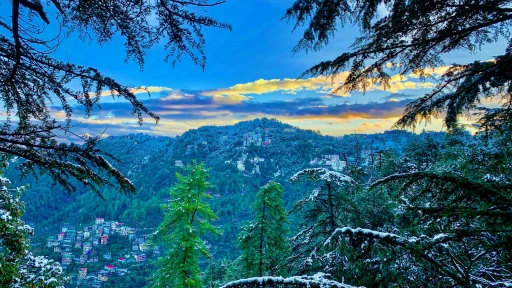Articles about travelling to Shimla - Page 1
Perched at a lofty altitude in the heart of the Northern Indian state of Himachal Pradesh, Shimla stands as one of the country's most iconic hill stations. Often dubbed the "Queen of Hill Stations," Shimla's colonial charm, interwoven with its scenic splendor, offers a timeless allure. The town's Victorian architecture, a legacy of its time as the summer capital of British India, stands juxtaposed against the backdrop of the majestic Himalayan ranges. The Ridge, the Mall Road, and the historic Christ Church not only serve as popular landmarks but also as testament to Shimla's rich colonial history.
Beyond its colonial vestiges, Shimla is a haven for nature lovers and adventure enthusiasts. The surrounding deodar and pine forests, interspersed with apple orchards, provide ample opportunities for trekking and nature walks. Nearby destinations such as Kufri and Naldehra are popular spots for snow sports, horse riding, and golfing, respectively. Furthermore, Shimla's cultural tapestry, marked by festivals, local crafts, and a blend of Himachali and Tibetan influences, enriches every traveler's experience. The Shimla Literature Festival and the Summer Festival, among others, draw artists, writers, and tourists, creating a vibrant mosaic of cultural exchange.
Shimla's accessibility has always been one of its strong suits. The Kalka-Shimla railway, a UNESCO World Heritage site, offers an enchanting journey through tunnels, bridges, and picturesque landscapes, making the journey as memorable as the destination itself. For those preferring air travel, the Shimla Airport at Jubbarhatti, around 22 km away from the city, provides connectivity to major cities. However, the road journey to Shimla, weaving through the mountains with panoramic views at every turn, remains a favorite for many. Whether it's the allure of snowfall in winter, the pleasant retreat it offers during summer, or its rich tapestry of culture and history, Shimla invariably finds its way onto the bucket list of many travelers.





